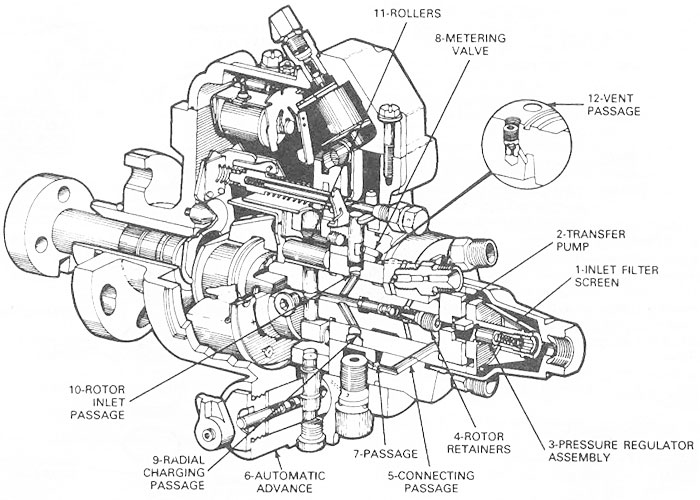#131 Roosa Master Diesel Fuel-Injection Pump
1947
Early developmental models of distributor-type injection pump for controlling engine speed
The distributor-type rotary diesel-fuel injection pump helped to make smaller, high-speed diesel engines cost competitive with gasoline engines and opened up markets for the diesel engine in agriculture, marine propulsion, and power generation.
Mechanical injection forces fuel through a spray nozzle into the cylinders of a diesel engine under hydraulic pressures of 2,000 pounds per square inch or more. The Roosa Master injection pump was the first distributor-type to provide a simple mechanism for controlling the speed of generator sets, thereby reducing its complexity and number of parts. The pump combines a single-cylinder opposed-plunger pumping system to feed all cylinders of a multicylinder engine with the concept of inlet metering. This method of plunger action reduces the size and weight from the in-line camshaft system.
The Roosa Master was manufactured by the Hartford Machine Screw Company (now Stanadyne), which was founded in 1876 by Christopher Spencer for the production of screws and other fasteners on the Hartford automatic screw machine. The company had begun producing aircraft parts shortly after Pratt & Whitney produced its air-cooled engine for the Wasp in 1925.
The rotary distributor-type diesel fuel injection pump was invented by Vernon Roosa in 1941. Ernest J. Willson was development engineer and Leonard Baxter assisted. Roosa's injection pump concept had come to the attention of the company in 1947 while Roosa was in New York City repairing and maintaining diesel-electric generator sets. In June, Roosa and Willson went to Hartford to develop the concept for the pump, and by 1952 the first contract.

Landmark Location
Stanadyne Auto Corp.
Diesel Systems Division
92 Deerfield Road
Windsor, CT 06095
Visiting Info
Regular hours: Mon-Fri 8-4:30
Ceremony Notes
April 1988
